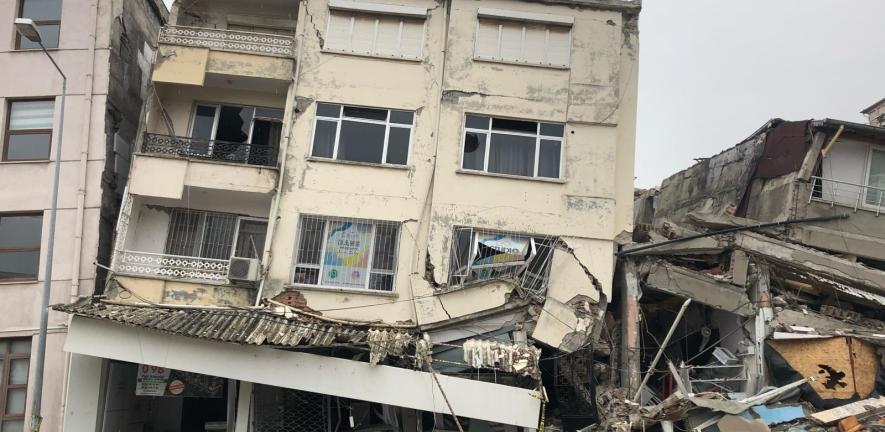
The Earthquake Engineering Field Investigation Team (EEFIT), co-led by Professor Emily So, today publishes its findings and recommendations.
The Earthquake Engineering Field Investigation Team (EEFIT), co-led by Professor Emily So, today publishes its findings and recommendations.
Our field work and remote analysis revealed many issues, including the issue of non-compliant buildings with little seismic resilience. Building code compliance needs to be strengthened.”
Professor Emily So
A new, independent field investigation into the aftermath of the Turkey-Syria earthquakes has found that a drive for profit has pushed all players within the construction industry to take shortcuts, with building stock primarily made of Reinforced Concrete (RC) structures, being the main cause of the casualties.
Findings show that deficiencies were also recorded among even the newest building stock. This is despite established technical know-how, state-of-the-art building codes and rigorous building regulations.
The longitudinal study report published here today by the Institution of Structural Engineers for EEFIT, was co-led by Cambridge's Professor Emily So, Professor of Architectural Engineering and Director of the Cambridge University Centre for Risk in the Built Environment (CURBE) and Dr Yasemin Didem Aktas from the Faculty of Engineering Sciences at UCL. Some of the findings include:
- The drive for profit pushes players within the construction industry to take shortcuts. The auditing and quality control mechanisms embedded in the legal and bureaucratic processes should be strengthened to ensure code compliance. The legalisation of non-compliant buildings through amnesties cannot continue.
- Critically, despite established technical know-how, state-of-the-art building codes and rigorous building regulations, deficiencies in Reinforced Concrete (RC) structures were found even in the newest building stock. This demonstrates that seismic resilience is not only a technical problem in Turkey, but one that demands a multi-sectoral and interdisciplinary dialogue, scrutinising the regulatory system, bureaucracy, the legal and political backdrop within which the construction sector operates in Turkey.
- Building stock is primarily composed of Reinforced Concrete structures, which were therefore the main cause of the casualties. The team saw problems with such structures across their whole lifecycle from design to implementation and post-occupancy stages. The structures therefore did not withstand the seismic pressures.
- A review of building stock and infrastructure is critical to understand risk levels for future earthquakes. Lack of publicly available data is a big problem in Turkey, hindering not only a robust inquiry into damage and associated building characteristics, but also reliably establishing the risk profiles for future events.
- Debris management and demolishment practices have not fully recognised the potential of mid-/long-term environmental and public health implications. Field observations and contacts in the affected communities show that they are already affected by the poor air quality. The Compulsory Earthquake Insurance (CEI) is a system that was put in place in Turkey following the 1999 earthquakes to provide monetary reserves to fund the management of future disasters. The extent to which these funds have been used and how resources have been allocated remain unclear.'
Read the full report and findings here.
Professor So says: “The 2023 Türkiye and Syria earthquakes were truly tragic, hitting an already fragile population, including migrants. Our field work and remote analysis revealed many issues, including the issue of non-compliant buildings with little seismic resilience. Building code compliance needs to be strengthened.”
EEFIT - a joint venture between industry and universities - gathered a team of 30 global experts to assess the damage and develop suggestions to reduce future impacts and vulnerabilities. They studied the science, engineering and data related to the earthquakes including geotechnics, the structural and infrastructure impact, and the relief response and recovery. The team continues to work in the area, to follow the recovery and collaborate with colleagues from Turkey for better seismic resilience.

The text in this work is licensed under a Creative Commons Attribution-NonCommercial-ShareAlike 4.0 International License. Images, including our videos, are Copyright ©University of Cambridge and licensors/contributors as identified. All rights reserved. We make our image and video content available in a number of ways – on our main website under its Terms and conditions, and on a range of channels including social media that permit your use and sharing of our content under their respective Terms.
